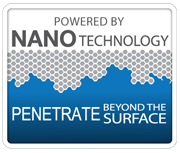No we do not.
Triclosan is an antibacterial and antifungal agent. It is a polychloro phenoxy phenol. Despite being used in many consumer products, beyond its use in toothpaste to prevent gingivitis, there is no evidence according to the American Food and Drug Administration (FDA) that triclosan provides an extra benefit to health in other consumer products.
In August 2009, the Canadian Medical Association asked the Canadian government to ban triclosan use in household products under concerns of creating bacterial resistance and producing dangerous side products (chloroform).
Triclosan also reacts with the free chlorine in tap water to produce lesser amounts of other compounds, like 2,4-dichlorophenol. Most of these intermediates convert into dioxins upon exposure to UV radiation (from the sun or other sources). Although small amounts of dioxins are produced, there is a great deal of concern over this effect, because some dioxins are extremely toxic and are very potent endocrine disruptors.
They are also chemically very stable, so that they are eliminated from the body very slowly (they can bioaccumulate to dangerous levels), and they persist in the environment for a very long time.
The use of triclosan as an additive for plastic production for use in food packages had not been approved by the EC
Nonorganic antibiotics, such as silver and copper ions and nano-particles, and organic biocides are effective alternatives to triclosan.
Hence, where anti-bacterial or anti-fungal properties are required, we use nanosilver, the modern version of one of the oldest anti-bacterial products known to science.



